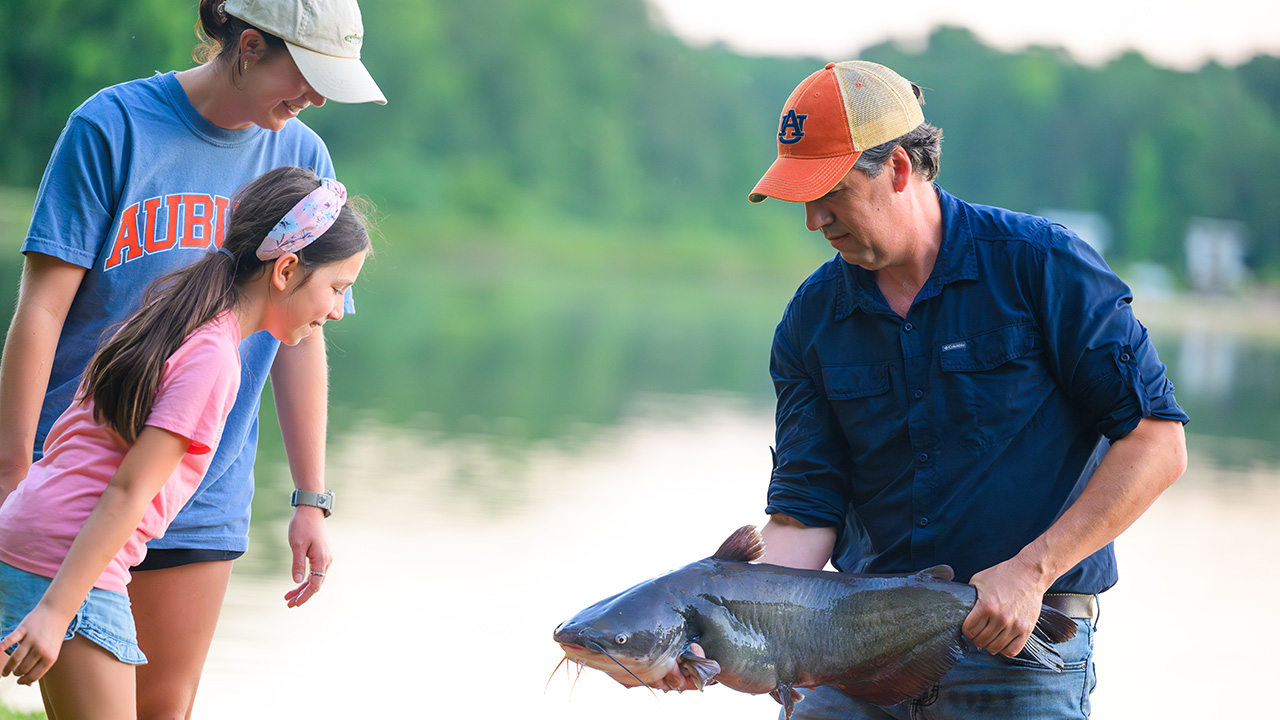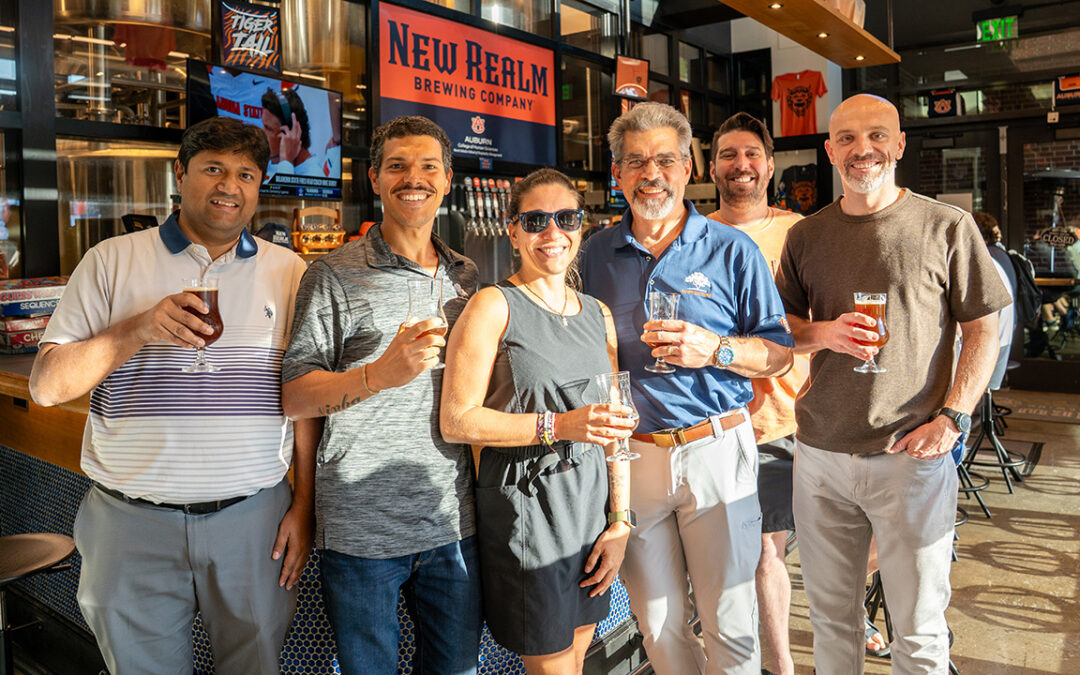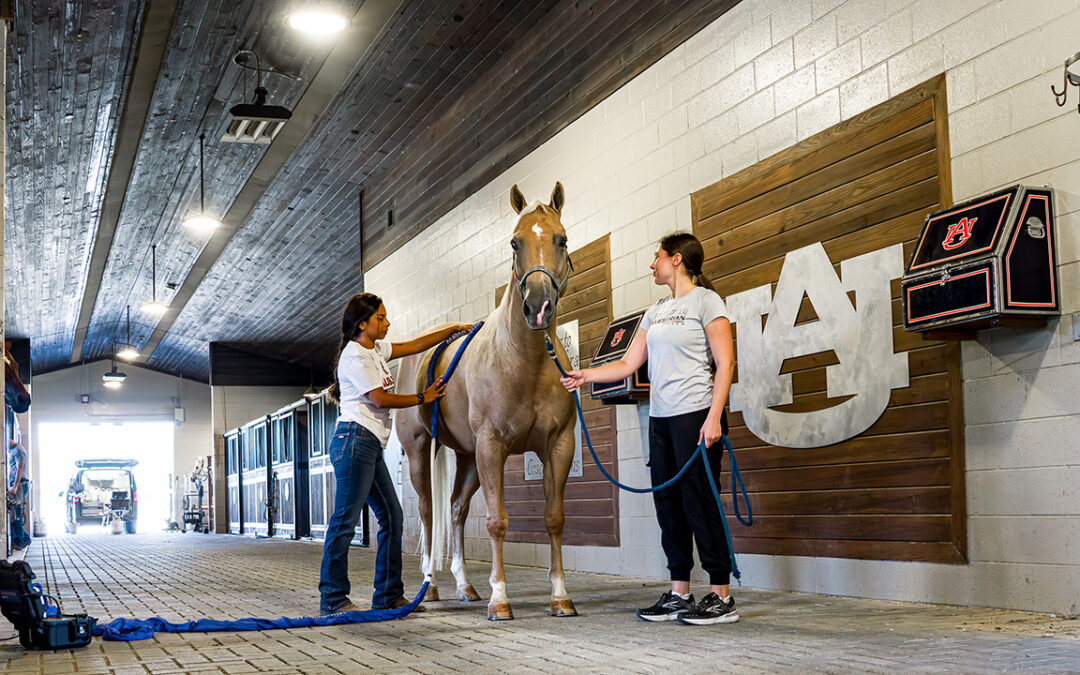Did you know that Alabama produces roughly 30% of the nation’s catfish?
Catfish are farmed both on small, family-owned farms and in large-scale operations focused on the consumer market. Currently, the industry is battling the problem of fish who are growing too large too fast, and that’s where Auburn University is stepping in to lend a hand.
“These fish weigh around 20 pounds,” said Larry Lawson, director of the Research and Extension Center in the School of Fisheries, Aquaculture & Aquatic Sciences. “You’ve got them consuming the smaller fish and eating your feed, and they’re worth nothing when you send them to the processing plant. This is a major issue; our farms are losing a lot of money.”
Auburn University has two facilities on opposite ends of the state that are equipped to help catfish farmers through research and outreach.
Located north of campus in Auburn, the E.W. Shell Fisheries Center serves modest “fee fishing” operations in Lee and Chambers counties. These are family-owned farms where local residents can fish in relatively small ponds and pay by the pound for whatever they catch. The Fisheries staff regularly provides technical expertise on topics like breeding catfish and determining feeding rates based on the season.
“There’s a lot of water in Alabama, but there’s relatively little fishing access for people that don’t have boats,” Lawson said. “A lot of these farmers farm other things like cattle and row crops, but they have these ponds on their property that aren’t really utilized, so they open them up for fishing.”
On the western side of the state, in Greensboro, is the Alabama Fish Farming Center (AFFC). The AFFC staff, which includes Extension Professors Luke Roy and Anita Kelly, works primarily with farmers producing catfish for consumer consumption. They are well-versed in fish health and disease and serve as a resource for the nearly 90 farms that make Alabama the second largest producer of catfish in the U.S.
While they might be helping two different types of farmers, the Shell Fisheries and AFFC faculty and staff members are actively working together on research that can solve some of the industry’s biggest challenges.
Many farmers are raising a blue catfish and channel catfish hybrid, which makes up half of all catfish harvested in the U.S., so the problems surrounding their rapid growth are widespread. Both small- and large-scale farmers aim to harvest fish that are “market size,” between one and a quarter and four pounds. When farmers take fish larger than that to a processing plant, they are paid a much-reduced price for their fish since extra labor is required to process them by hand and there are limited markets for larger fish.
However, many of these large fish aren’t even making it to the processing plant because they are so good at escaping harvest. As they continue to grow beyond market size, they are eating a large amount of feed and actually eating other fish. Lawson says all three of these issues are hurting farmers financially.
“You’re putting food in there, but the big fish are eating it, and the little fish aren’t getting it. So, you’re reducing the growth of the smaller fish you’re trying to grow and you’re basically wasting feed on big fish you don’t want to grow,” he said. “And you’re going to get docked on those big fish when you send them to the processing plant.”
Recently, Roy and Kelly started hearing from local farmers that they could see these “supersized” fish waiting to eat fingerling catfish as their ponds were being stocked. The AFFC has also documented fingerlings in the digestive tract of larger hybrid catfish.
With funding from a United States Department of Agriculture Specific Cooperative Agreement, they have already completed studies to determine the size and age of these fish in commercial ponds. They initially thought it would take at least five years for a hybrid catfish to reach 10 pounds, but their research showed that the rapid growth rate of hybrids allowed them to achieve that size in as little as three years.
“Hybrid catfish have the capacity to achieve much larger maximum sizes than channel catfish,” Roy said. “We have documented hybrid catfish that routinely exceed 25 pounds and can attain sizes that exceed 50 pounds on commercial catfish farms in west Alabama. Collectively, these issues can create problems for farmers if catfish repeatedly avoid harvest.”
Before he retired from Auburn in 2022, Professor Terry Hanson did a preliminary economic study that weighed the costs of the possible solutions for removing big fish from commercial ponds. Draining rectangular research-scale, half-acre ponds like the ones at E.W. Shell Fisheries is relatively simple.
But in west Alabama, many farms have “hillside ponds,” where the water takes the shape of the surrounding terrain across an average of 10 acres of land. The extra labor and lost opportunity costs involved with draining these larger commercial ponds may not be worth it.
“In an ideal world, you would be able to remove all the catfish from the pond at harvest,” Roy said. “Unfortunately, the large scale and difficulty associated with harvesting commercial catfish ponds creates a situation in which many of these larger hybrid catfish can consistently evade harvest year after year.”
Currently, doctoral student Jesse James is leading research at the AFFC to address these issues. He is carrying out field studies that will assess the extent to which big catfish are eating smaller catfish fingerlings on commercial farms, and he’s also working to quantify the age structure of channel catfish. While they do not get as big as hybrid catfish, channel catfish can still be problematic for famers when they exceed premium market size.
At both facilities, faculty and staff members’ primary goal is to listen to the catfish farmers and look for ways to help them. While they are well-equipped to advise farmers raising shrimp, crawfish and other aquatic species, the catfish industry’s importance to the state economy makes it a priority, and the knowledge generated at Auburn can be applied across the U.S.
“A lot of our research is focused on the catfish industry, which is our primary stakeholder as an aquaculture program,” said Lawson. “Catfish are the largest aquaculture-related industry in the U.S. and the state of Alabama. What happens in the catfish industry translates to the overall industry of aquaculture in the United States.”




